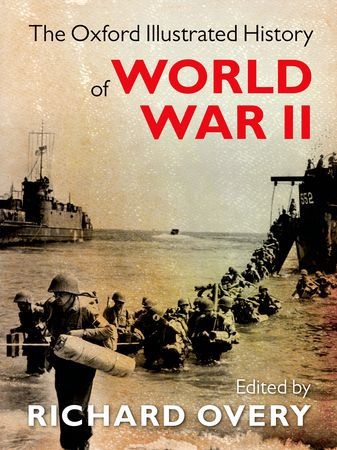Read more
World War Two was the most devastating conflict in recorded human history. It was both global in extent and total in character. It has understandably left a long and dark shadow across the decades. Yet it is three generations since hostilities formally ended in 1945 and the conflict is now a lived memory for only a few. And this growing distance in time has allowed historians to think differently about how to describe it, how to explain its course, and what subjects to focus on when considering the wartime experience.
For instance, as World War Two recedes ever further into the past, even a question as apparently basic as when it began and ended becomes less certain. Was it 1939, when the war in Europe began? Or the summer of 1941, with the beginning of Hitler's war against the Soviet Union? Or did it become truly global only when the Japanese brought the USA into the war at the end of 1941? And what of the long conflict in East Asia, beginning with the Japanese aggression in China in the early 1930s and only ending with the triumph of the Chinese Communists in 1949?
In The Oxford Illustrated History of World War Two a team of leading historians re-assesses the conflict for a new generation, exploring the course of the war not just in terms of the Allied response but also from the viewpoint of the Axis aggressor states. Under Richard Overy's expert editorial guidance, the contributions take us from the genesis of war, through the action in the major theatres of conflict by land, sea, and air, to assessments of fighting power and military and technical innovation, the economics of total war, the culture and propaganda of war, and the experience of war (and genocide) for both combatants and civilians, concluding with an account of the transition from World War to Cold War in the late 1940s. Together, they provide a stimulating and thought-provoking new interpretation of one of the most terrible and fascinating episodes in world history.
List of contents
- Preface
- Acknowledgements
- Editor's Introduction
- 1: Patricia Clavin: The Genesis of World War
- 2: Steven Lee: Japan's War in Asia
- 3: Nicola Labanca: The Italian Wars
- 4: Richard Overy: The German Wars
- 5: Eric Grove: The West and the War at Sea
- 6: Evan Mawdsley: The Allies from Defeat to Victory
- 7: David French: Fighting Power: World War and Military Innovation
- 8: Richard Overy: Economies in Total War
- 9: Michael Snape: Front Line I: Armed Forces at War
- 10: Richard Overy: Front Line II: Civilians at War
- 11: Richard Bessel: Unnatural Deaths
- 12: David Edgerton: War, Invention, and Experts
- 13: David Welch: The Culture of War: Propaganda, Arts and Ideas
- 14: Geoffrey Roberts: From World War to Cold War
- Epilogue
- Further Reading
- Index
About the author
Richard Overy, geboren 1947 in London, zählt zu den bedeutendsten Zeithistorikern unserer Tage. Er lehrt Geschichte an der University of Exeter und lebt in London. Mehrere seiner Bücher gelten als Standardwerke.
Summary
World War Two re-assessed for a new generation, from the 1930s through to the beginnings of the Cold War. A stimulating and thought-provoking new interpretation of one of the most terrible episodes in world history.
Additional text
combines a breadth and depth not seen in much military history writing. The skillful analysis of each chapter does not sacrifice narrative ability to address topics ranging from the German, Italian, and Japanese conduct of the land, sea, and air wars to the political intricacies of the Grand Alliance, scientific innovation, and the cultural history of the war ... Did this reviewer mention the illustrations? Astounding.
Report
... The Oxford Illustrated History of World War Two is a thoughtful and thought-provoking volume, which succeeds very well in bringing at least a taste of the wealth of current Second World War scholarship to a wider audience. There is much here to admire; not least the erudition of the contributors and the eclectic and original selection of photographs ... an excellent, concise and enlightening volume. As such, it is a worth addition to the library of every student and every scholar of the conflict. Roger Moorhouse, History Today

